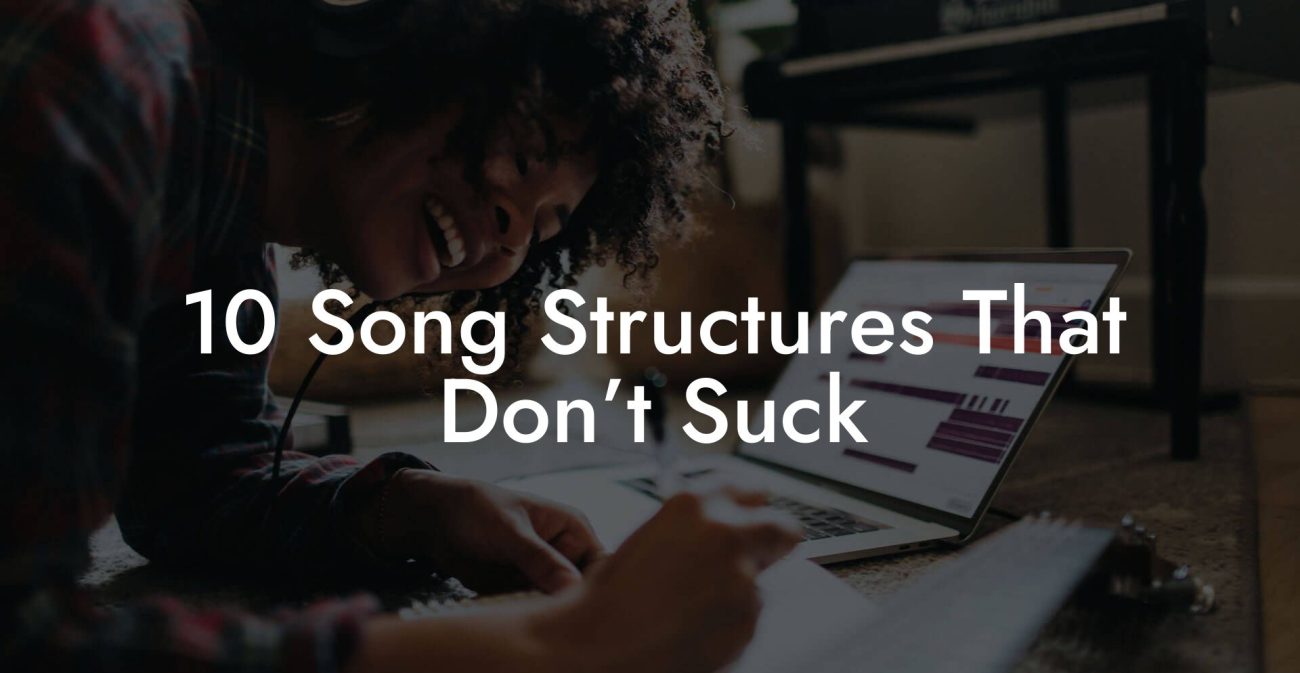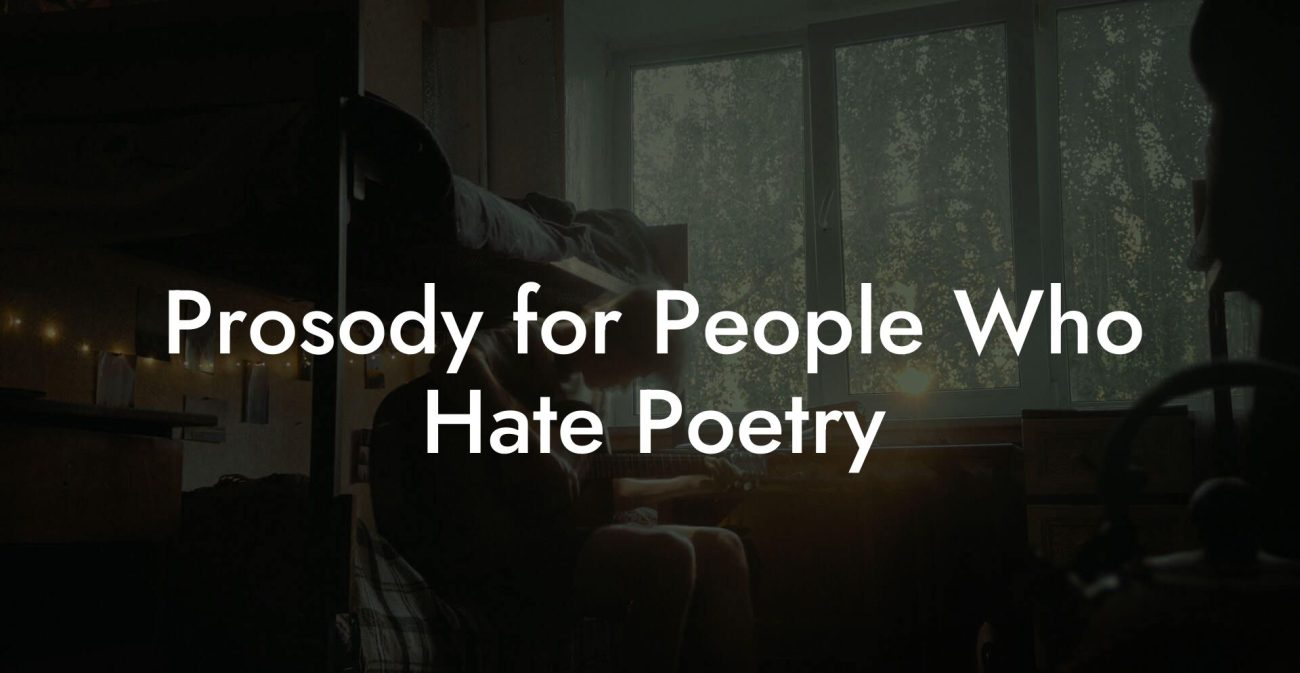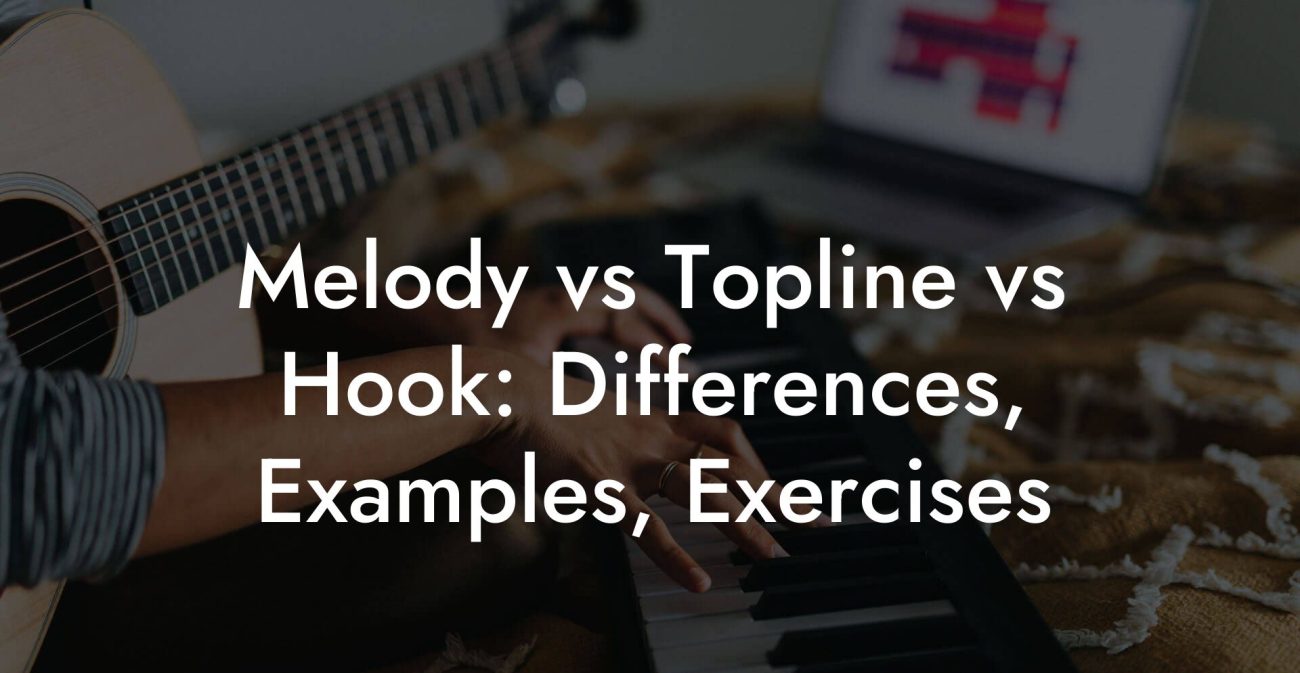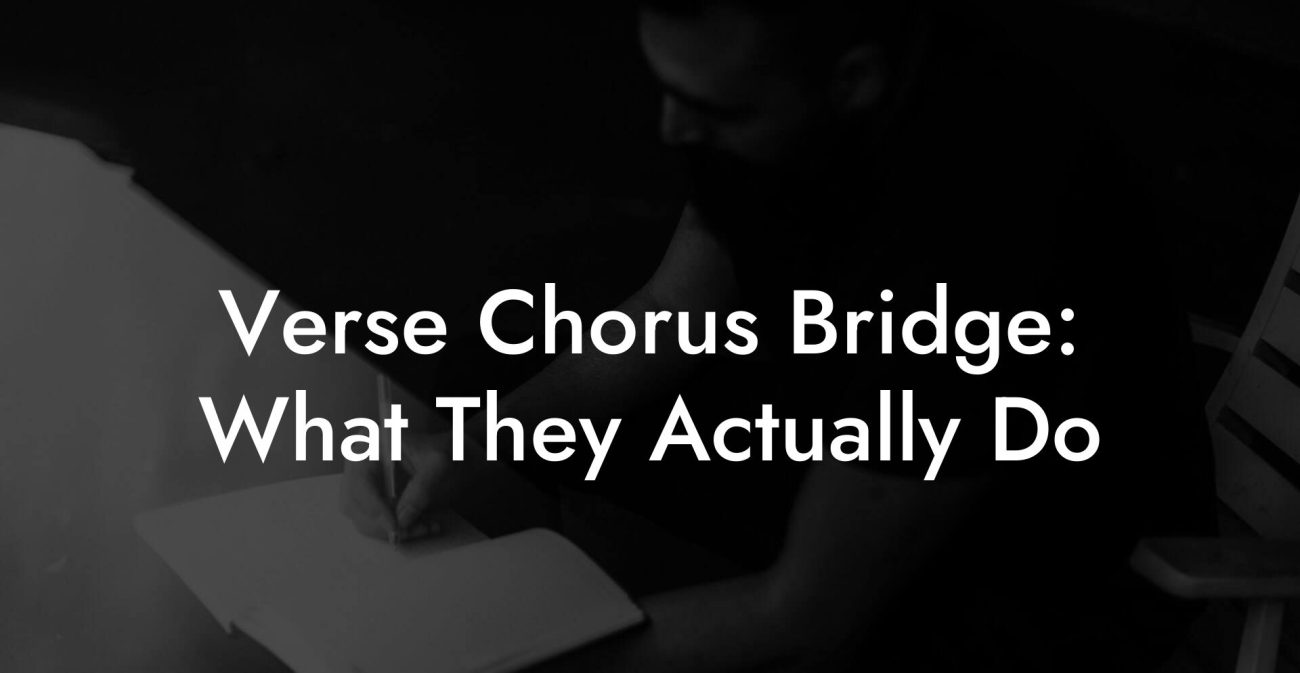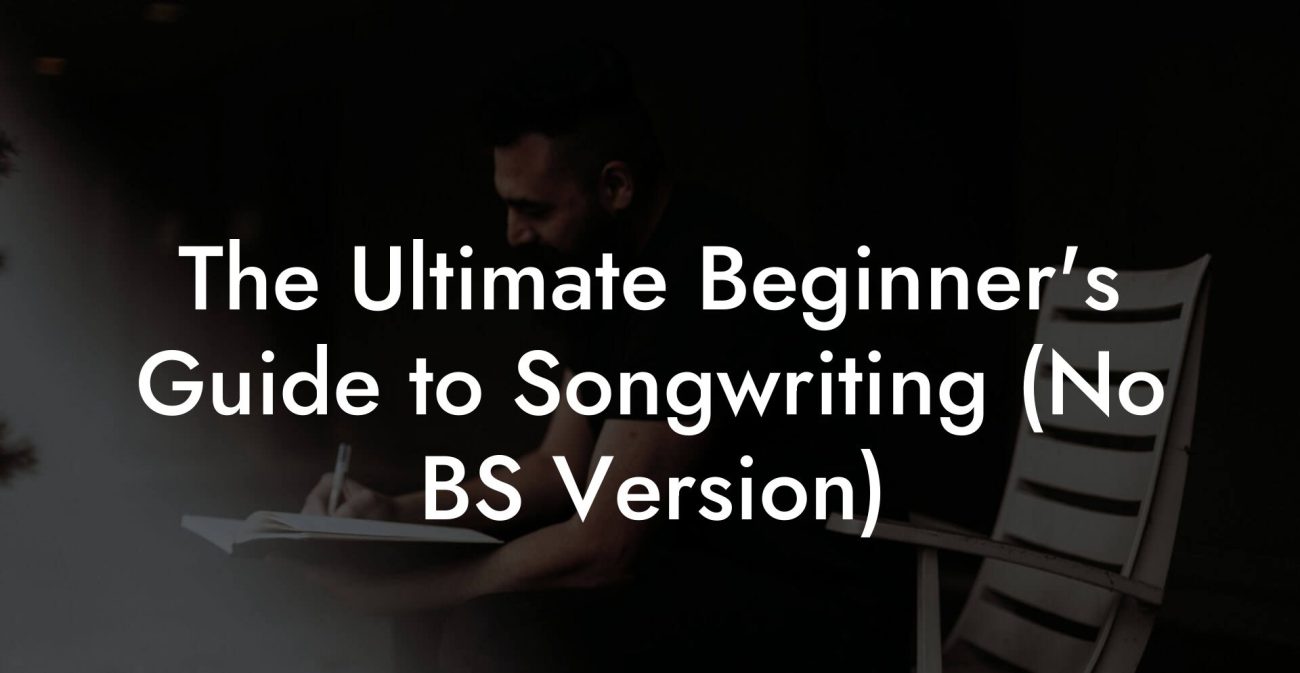Songwriting Advice
Rhyme Schemes 101 (AAA AABB ABAB)
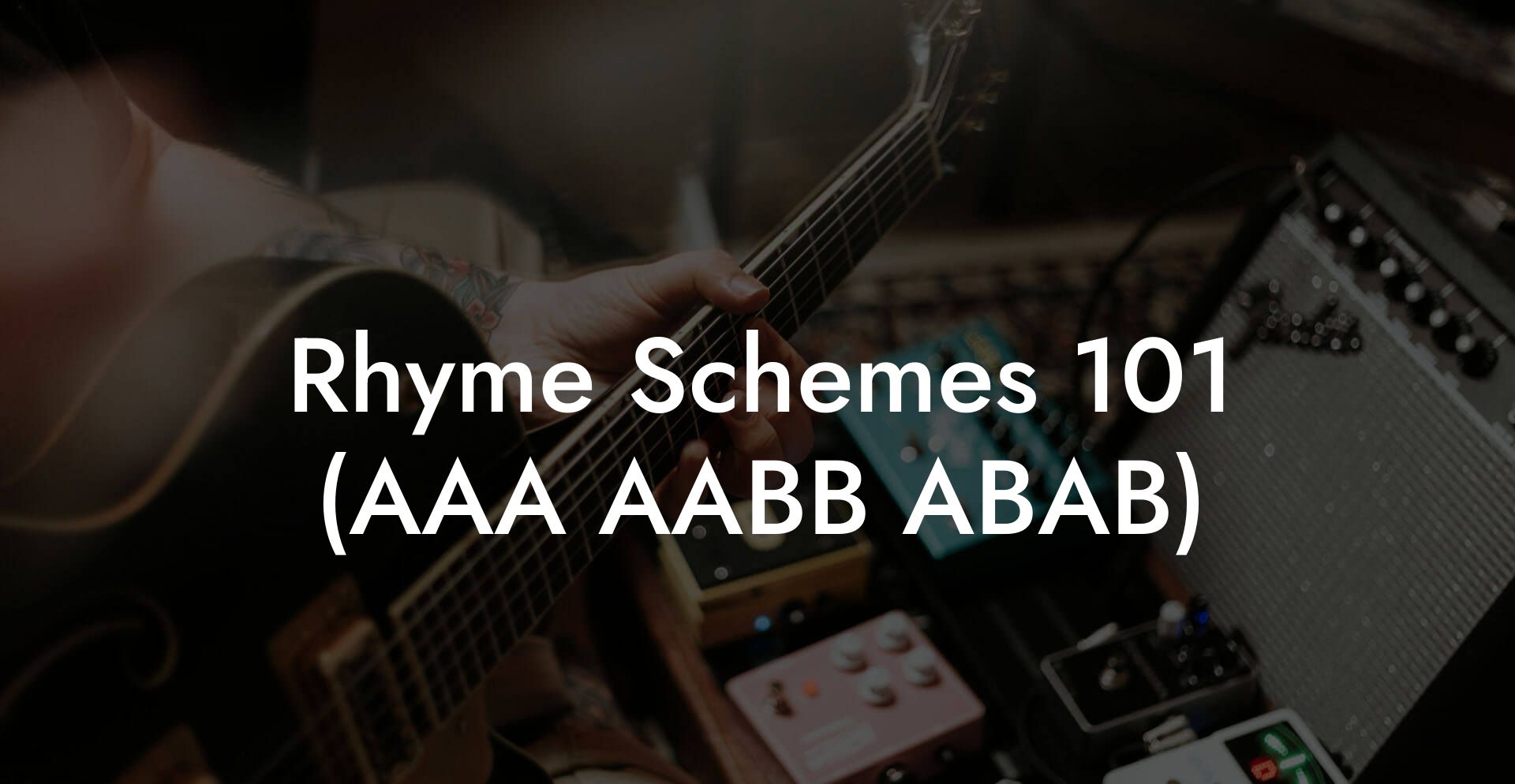
If you want lines that smack the brain and stick in the ear, you need to understand rhyme schemes like a pro. This guide will teach you what AAA, AABB, and ABAB actually mean, why each one slaps in certain situations, and how to use them so your lyrics sound clever instead of try hard. We will cover nerdy theory, street practical examples, and fast drills you can use between snacks.
Quick Interruption: Ever wondered how huge artists end up fighting for their own songs? The answer is in the fine print. Learn the lines that protect you. Own your masters. Keep royalties. Keep playing shows without moving back in with Mom. Find out more →
Quick Links to Useful Sections
- What is a Rhyme Scheme
- Why Rhyme Scheme Matters More Than You Think
- How to Read Rhyme Notation
- AAA Explained
- When AAA hits hardest
- Why AAA works
- AAA examples
- AAA writing tips
- AAA in a real life songwriting scenario
- AABB Explained
- When AABB hits hardest
- Why AABB works
- AABB examples
- AABB writing tips
- AABB in a real life songwriting scenario
- ABAB Explained
- When ABAB hits hardest
- Why ABAB works
- ABAB examples
- ABAB writing tips
- Comparing AAA, AABB, and ABAB
- Advanced Concepts That Make Rhyme Schemes Pop
- Internal rhyme
- Multisyllabic rhyme
- Masculine and feminine rhyme
- Slant rhyme also called near rhyme
- Eye rhyme
- Prosody and Rhyme Scheme
- Editing for Rhyme That Actually Helps the Song
- Genre and Rhyme Scheme Choices
- Examples With Before and After Lines
- Original line pair
- After rewrite
- Original couplet
- Practice Drills to Master Rhyme Schemes
- Rhyme ladder
- Couplet flip
- Multisyllable gym
- Internal rhyme warm up
- Rhyme Tools and Resources
- Common Mistakes Writers Make With Rhyme Schemes
- How to Decide a Scheme When You Are Stuck
- Putting It All Together: A Full Example
- AAA chorus version
- AABB chorus version
- ABAB chorus version
- 30 Day Rhyme Mastery Plan
- When to Break the Rules
- Final Practical Checklist Before You Ship a Song
- Rhyme Schemes FAQ
Everything here is written for songwriters, rappers, poets, and lyric nerds who want to sharpen the weapon on the page. Expect real life scenarios, explicit examples, and editing tricks you can apply to a verse right now. We will explain terms and acronyms along the way in plain language so you never have to guess.
What is a Rhyme Scheme
A rhyme scheme is a pattern that shows which lines rhyme with each other. Writers use letters to mark matching line endings. The first unique rhyme gets the letter A. The next new rhyme gets the letter B and so on. If line one rhymes with line three, both get A. If line two and line four rhyme with each other but not with line one, they get B. That simple notation helps you think about pattern instead of guessing.
Practical example
- Lines that all rhyme one after another look like AAAA. That means every line ends with the same rhyme.
- Two lines that pair up would be AABB. The first two lines rhyme with each other and the second two lines rhyme with each other.
- Alternate rhyme looks like ABAB. The first and third lines rhyme and the second and fourth lines rhyme.
Why Rhyme Scheme Matters More Than You Think
Rhyme scheme is not decoration. It controls the listener experience. Rhyme patterns guide expectations, give release, and tune the song charisma. Some schemes make punchlines land like a gut shot. Some make choruses feel like a campfire singalong. The scheme you choose affects flow, surprise, and singability.
Real life scenario
Imagine two baristas reading your verse in the break room. One hears AAA and thinks steady drumbeat. The other hears ABAB and imagines call and response. Both are right. The rhyme scheme shaped what they felt before words even landed.
How to Read Rhyme Notation
Short primer
- Same letter means the same rhyme family or sound landing at the line end.
- Different letter means a new rhyme sound.
- Rhyme family can include perfect rhyme, near rhyme, and multisyllabic rhyme. We will define each as we go.
AAA Explained
AAA means every line in the unit ends with the same sound. It creates consistency, a hypnotic loop, and sometimes a feeling of inevitability. Used well it feels like a drumbeat that the ear can predict. Used poorly it feels like a nursery rhyme for late stage capitalism.
When AAA hits hardest
- Chants and hooks where repetition breeds memorability.
- Punchlines stacked for emphasis in a short burst.
- Children songs and refrains where predictability is the point.
- Trap hooks and club chants where the rhythm and vowel make the crowd sing along.
Why AAA works
AAA lets you lean into tiny changes in delivery, tone, or instrumentation while the words stay the same. That stability frees the performer to play the vowel and cadence. The ear learns the ending quickly and starts predicting it. The feeling is satisfying, like hearing the chorus of a favorite pop song for the third time in a row.
AAA examples
Simple chant example
I came to win I came to win I came to win
That is AAA because the ending sound is the same. You can make the same line feel triumphant or weary with a small vocal change. AAA is about performance as much as words.
AAA writing tips
- Pick a strong vowel or syllable that is easy to sing or shout. Vowels like ah oh and ay are powerful on high notes.
- Use AAA sparingly. It is intoxicating but can become monotonous if your lines are long or dense.
- Pair AAA with internal rhyme and varied stress to keep interest inside the line even if the end is fixed.
- Experiment with multisyllabic endings to avoid sounding childish. Two syllable endings can still rhyme with each other while sounding sophisticated.
AAA in a real life songwriting scenario
You are writing a chorus for a party song. You want a crowd chant that they can pick up after one listen. Choose AAA, pick a short phrase with a strong vowel, and repeat it three times with slight shouting variation on the last repeat. The crowd learns it fast and then you deliver a surprise fourth line that flips meaning. That flip hits because the repetition primed them.
AABB Explained
AABB is one of the most natural rhyme patterns in English. It groups lines into couplets. The first two lines rhyme together and the next two lines rhyme together. This creates a felt pause in the middle and a sense of forward motion as each couplet completes an idea.
When AABB hits hardest
- Storytelling verses where each couplet carries an image or a beat.
- Punchline rap where each couplet sets up and lands a joke or a twist.
- Acoustic folk songs where couplets feel like conversational exchanges.
Why AABB works
Human speech often groups information in pairs. AABB mimics that natural cadence. Each couplet gives a mini payoff and then the next couplet delivers another payoff. The pattern works with memory because two line units are small enough to hold and satisfy. Rappers use it to sequence lines that build an argument or escalate bravado.
AABB examples
Example verse couplet
My phone glows like the moon at three am in the room A I scroll your profile till my eyes bloom A I tell myself tomorrow I will move on B But tomorrow loves to sleep till two in the dawn B
Couplets let you rhyme with more freedom across the two line pair. You can place a kicker at the end of each pair to keep listeners waiting for the small resolution each time.
AABB writing tips
- Use the first couplet to set an image or a problem. Use the second couplet to react or escalate.
- Make the rhyme in the second couplet different from the first but thematically linked. That contrast gives freshness.
- Play with line length. Short line followed by longer line in a couplet can feel conversational and human.
- Place a small twist in the second line of a couplet to create a mini revelation. That moment feels like a payoff.
AABB in a real life songwriting scenario
You are writing a verse about an awkward breakup. Use the first couplet to show a domestic detail. Use the second couplet to reveal emotional contradiction. The couplet structure allows you to pace the story like a series of camera cuts while keeping rhyme tight and natural.
ABAB Explained
ABAB is the classic alternate rhyme. It places rhyme across the stanza in a way that feels lyrical and open. The first and third lines rhyme, the second and fourth lines rhyme. That creates movement because the rhyme does not resolve until the later line of the stanza. The pattern can feel more literary and conversational at the same time.
When ABAB hits hardest
- Ballads and narrative songs where the rhyme helps drive the forward motion of the story.
- Verses that need a sense of continuation rather than quick resolution.
- Acoustic or singer songwriter material where the alternation supports melodic flow.
Why ABAB works
ABAB delays gratification. The ear expects the rhyme to resolve and then has to wait one line for it to land. That delay adds tension and makes the eventual rhyme feel like a reward. The pattern also helps avoid monotony because every second line introduces a new sound.
ABAB examples
Example stanza
Streetlight paints the alley with a tired gold A Your laugh folds into the hum of the car B I trace the pockets where your hands used to hold A And hold on to the map of who we are B
Here the A rhyme gives a recurring image and the B rhyme anchors the emotional beat. The alternation makes the stanza feel like a conversation with itself.
ABAB writing tips
- Use ABAB when your melody or cadence wants space before it repeats a sound.
- Think in pairs of lines but make each line do different work. One line can paint a scene. The next line can reveal an emotional reaction.
- Watch prosody. If the stressed syllable in your rhyme falls on a weak musical beat, you will feel friction even if you cannot explain it.
- Consider using ABAB when you want the verse to lead naturally into a chorus. The alternation keeps energy moving forward.
Comparing AAA, AABB, and ABAB
So which scheme hits hardest? The short answer is it depends. Each scheme punches in a different place. Here is a quick guide to pick based on intention.
- Need a chant that makes a crowd shout back? Go AAA.
- Need short story beats that land like one two? Go AABB.
- Need lyrical movement and delayed payoff? Go ABAB.
Think of it like choosing a weapon. AAA is a hammer. AABB is a pair of knives. ABAB is a precision tool. Use the right tool for the job.
Advanced Concepts That Make Rhyme Schemes Pop
Internal rhyme
Internal rhyme is rhyme inside a line, not just at the line end. It adds bounce and surprise. Internal rhyme can work with any scheme and keeps AAA from sounding like a nursery rhyme.
Example
The city sips the sun, the city slips and hums A The alley flips a coin where memory comes A
Multisyllabic rhyme
Rhyme that covers multiple syllables is harder and sounds impressive. Think about matching two or three syllable units rather than single syllables. This is a favorite move in rap to show skill and to build long internal patterns that feel satisfying.
Example
Telephone lines and skeleton signs A Metropolitan nights and forgetting your lines A
Both ends share multiple syllable sounds which feel rich and smart.
Masculine and feminine rhyme
Masculine rhyme ends on a stressed syllable. Feminine rhyme ends on an unstressed syllable after a stressed syllable. For example cat and hat are masculine. Human and rumen are feminine if the stress lands differently. Feminine rhymes can feel more musical and less punchy.
Slant rhyme also called near rhyme
Slant rhyme matches consonants or vowel families without being exact. It is a deliberate color choice. Slant rhyme allows you to keep the pattern while avoiding awkward phrasing.
Example
Cold and call C Hold and hole C
The sounds are close enough to suggest a rhyme while letting you write natural language.
Eye rhyme
Eye rhyme looks like it rhymes when written but does not rhyme when spoken. It can be a playful choice but use it carefully because the listener hears, not reads.
Prosody and Rhyme Scheme
Prosody means matching your word stress to the music. It is not enough that words rhyme. The stressed syllable must land on a strong beat if you want the rhyme to feel satisfying. A rhyme that falls on an off beat will feel like it slips even if it technically works.
Practical test
- Read the line at conversational speed. Mark the stressed syllable with your finger.
- Tap your foot to the beat you imagine for the melody.
- Speak the line while tapping. If the stressed syllable falls on the beat you want, the prosody works.
- If not, rewrite the line or change the melody so stress and beat align.
Editing for Rhyme That Actually Helps the Song
Writers often cling to a rhyme because it is clever. The test is whether the rhyme serves the song. Here is an editing checklist you can run on every stanza.
- Does the rhyme scheme support the emotional arc of the stanza or chorus?
- Is the rhyme forcing an awkward word into the line?
- Would switching to slant rhyme improve the naturalness?
- Does internal rhyme exist to add texture without flattening meaning?
- Have you varied schemes across sections to avoid monotony?
Genre and Rhyme Scheme Choices
Different genres have rhyme scheme preferences. This is not law. It is a pattern you can use to guide choices.
- Pop chorus: AAA or AAAA for singability and hook memory.
- Singer songwriter verse: ABAB or AABA for story movement.
- Rap verse: AABB and multisyllabic rhyme to show punch and technical skill.
- Country: AABB and narrative couplets to carry images and bittersweet jokes.
- Electronic vocal hook: AAA in short repetitive lines to build the dance moment.
Examples With Before and After Lines
These examples show small rewrites that improve rhyme without losing authenticity.
Original line pair
I feel sad when you leave the room A My heart breaks and goes boom A
Before it sounds juvenile. After we edit for prosody and image.
After rewrite
The light tilts where your jacket used to hang A I swear the coat breathes in the quiet and bangs A
The rhyme still reads as AAA but uses image and internal consonance to sound less childish.
Original couplet
I said goodbye and then I cried B I walked away into the night B
After rewrite, we use AABB and add surprising detail.
After rewrite
I left your mug with coffee cooling on the sill A I walked three blocks until my knees learned to stand still A
Same scheme but the details make the rhyme feel earned.
Practice Drills to Master Rhyme Schemes
Rhyme skill is practice and pattern recognition. Here are drills you can do in a coffee break.
Rhyme ladder
- Pick a target rhyme sound like ay or oh.
- Write ten different line endings that work with that sound, from simple to complex.
- Use those endings to make one two four line stanza using AAA and then AABB. Notice how the feel changes.
Couplet flip
- Write an AABB four line verse.
- Now rework it into ABAB without changing the images.
- Compare which version feels faster and which one tells the story better.
Multisyllable gym
- Pick a two syllable ending like city or funny.
- Write three lines that rhyme on both syllables.
- Try to write them with different stresses so you practice prosody alignment.
Internal rhyme warm up
- Write one line of ten to twelve syllables.
- Add at least two internal rhymes inside that line while keeping natural speech.
- Read it aloud to test if it lands musically.
Rhyme Tools and Resources
Useful sites and apps
- RhymeZone: A classic online rhyming dictionary. Type a word and get rhyming options.
- OneLook: Great for broader search across multiple word lists and related words.
- B Rhymes: Focuses on near rhyme suggestions which help when perfect rhyme sounds forced.
- Thesaurus: Sometimes the best rhyme partner is a synonym that fits your prosody better.
Tool tip
Use these tools as jump starters. They will not write your line. They will give you words. Your job is to shape them into natural speech and musical phrasing.
Common Mistakes Writers Make With Rhyme Schemes
- Choosing a rhyme because it is clever rather than because it fits the music.
- Overusing AAA in a long verse so the listener gets bored.
- Forcing perfect rhyme and ending up with awkward phrasing.
- Ignoring prosody so strong words land on weak beats and feel wrong.
- Using too many different schemes inside a single verse and losing cohesion.
How to Decide a Scheme When You Are Stuck
Quick flowchart to pick a scheme
- Do you need rapid memorable lines for crowd sing back? Choose AAA.
- Do you want short micro stories or punchlines? Choose AABB.
- Do you want a narrative that breathes and moves forward? Choose ABAB.
- If none feels perfect, write a demo with each scheme for the same melody and see which one gives the best vocal comfort and emotional hit.
Putting It All Together: A Full Example
We will write a short four line chorus in three versions to show how scheme changes the feel. The lyrical idea is stubborn affection after a breakup.
AAA chorus version
I still call your name when the light goes low A I still call your name when the night moves slow A I still call your name when the neon blows A I still call your name when the river knows A
Effect
AAA reads like a chant. It could be a hook for a late night club song. Repetition builds mantra energy. The same line shape makes room for musical dynamics and vocal doubling.
AABB chorus version
I leave your coffee cool where it used to be A I keep the lock of your hair in my old key A I say your name like a refusal B Then say your name like a wish coming true B
Effect
AABB feels like couplets each doing a piece of the story. The first pair gives domestic detail. The second pair moves inward emotionally. It reads like a confessional chorus in a folk ballad.
ABAB chorus version
I leave the window cracked to let the summer in A I say your name like I am testing the sky B I keep the spare key that I should have thrown in A I whisper your name and it answers me by and by B
Effect
ABAB delays rhyme resolution which creates a sense of searching. It suits a chorus that wants to feel more reflective and less chant like.
30 Day Rhyme Mastery Plan
Do this plan for one month to make rhyme schemes second nature.
- Day 1 to 5: Ladder drills with single syllable endings. Ten minutes per day.
- Day 6 to 10: Couplets practice. Write eight AABB couplets and perform them out loud.
- Day 11 to 15: Alternate rhyme practice. Convert AABB couplets into ABAB and note changes.
- Day 16 to 20: Multisyllable focus. Write ten four line stanzas that use multisyllabic rhyme.
- Day 21 to 25: Internal rhyme and prosody. Read aloud with a metronome and align stresses.
- Day 26 to 30: Song application. Take a verse from one of your songs and rewrite it in AAA AABB and ABAB. Record demos and pick the version that hits best.
When to Break the Rules
Rules are useful until they are not. Break rhyme scheme rules when the emotional truth of the line demands it. If an unusual rhyme or a lack of rhyme better serves the moment, embrace it. The trick is to break intentionally. If the break looks like an accident the listener will notice in the wrong way.
Real life scenario
Your chorus is meant to feel like unraveling trust. Choosing no rhyme on the last line can feel like a collapse. The absence becomes the point. That is how lack of rhyme becomes a deliberate device.
Final Practical Checklist Before You Ship a Song
- Does the rhyme scheme fit the emotional goal of each section?
- Do the rhymes sound natural when spoken at conversation speed?
- Do stressed syllables land on strong musical beats?
- Have you varied rhyme types across the song to avoid monotony?
- Did you use tools to find cleaner options without forcing phrasing?
- Did you record and listen back out loud to test memorability?
Rhyme Schemes FAQ
What if I can only think of forced rhymes?
First try slant rhyme instead of perfect rhyme. Slant rhyme matches vowel families or consonants and sounds natural. If that still feels forced, rewrite the line to avoid the rhyme. A small word swap often frees you from struggling to force a match. Tools can help but do not let them write your voice.
How many ending rhymes should a chorus have
Keep choruses simple. One rhyme repeated across the chorus or two alternating rhymes is common. Simplicity supports singability. If you use too many different rhymes in a chorus you risk losing memory and weakening the hook.
Can I mix schemes inside the same verse
Yes but do it intentionally. Mixing schemes can signal shifts in mood or perspective. The danger is incoherence. If you change schemes mid verse, make sure the change has a reason musically or lyrically.
Are multisyllabic rhymes always better
No. They are impressive when done well but can sound showy if they do not serve the emotion. Use multisyllabic rhyme to add weight or technical flair. Keep single syllable rhyme when you want raw simplicity.
How do I test my rhyme for prosody
Say the line at conversation speed while tapping a foot to the tempo you imagine. If the stress of the rhyme aligns with a strong beat, it will likely work musically. If it does not, tweak the wording or change which syllable is stressed.

